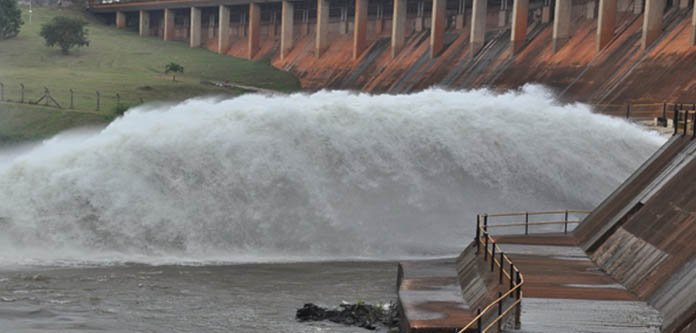Lake Victoria water levels has started falling back to normal after hitting a historic record high of 13.42 metres in decades – Eskom Uganda Limited has said.
The hydropower company tweeted on Friday that the water level has tremendously reduced to 13.24M, noting that the water spilling process had been authorized by the Directorate of Water Resources Management to curb the high water volume surge.
The company said the water spilling will continue at Nalubaale and Kiira Power Plants until the lake levels normalize. The spilling for both hydropower stations started in March at 1000 cubic meters per second and and rose to 2,400 cubic meters per second in May.
The surge posed a threat to hydropower generation in Uganda as it was feared the water levels could cause dislodgement of papyrus mats the to hydropower infrastructures.
Populations and businesses along the shores of the lake in both Uganda and Kenya suffered great losses with farms submerged within the contour buffer in Kenya.
READ: Lake Victoria water levels historically surge to the highest volume
Lake Victoria is a resource shared by the three East African countries: Kenya, Uganda and Tanzania and supports a livelihood of millions of people living around it.
Until recently, Lake Victoria water level had been receding at an alarming rate and perhaps most threatening prompting environmental experts to investigate climatic contribution to the declining Lake Victoria water level observed over a period of about 30 years.
A study by Joseph L. Awange et al; Falling Lake Victoria water levels: Is climate a contributing factor, demonstrated that the lake levels fluctuate annually and seasonally with significant drops during drought seasons and rapid rise during periods of above average rainfall in the region.
The study suggests that Lake Victoria water levels are very sensitive to climatic factors and as such, any long-term analysis should incorporate climate parameters.
Perhaps, the strong relationship between climatic indicators of drought and rainfall on one-hand and lake levels on the other hand signifies the need to incorporate climate information in predicting, monitoring and managing lake level changes.





